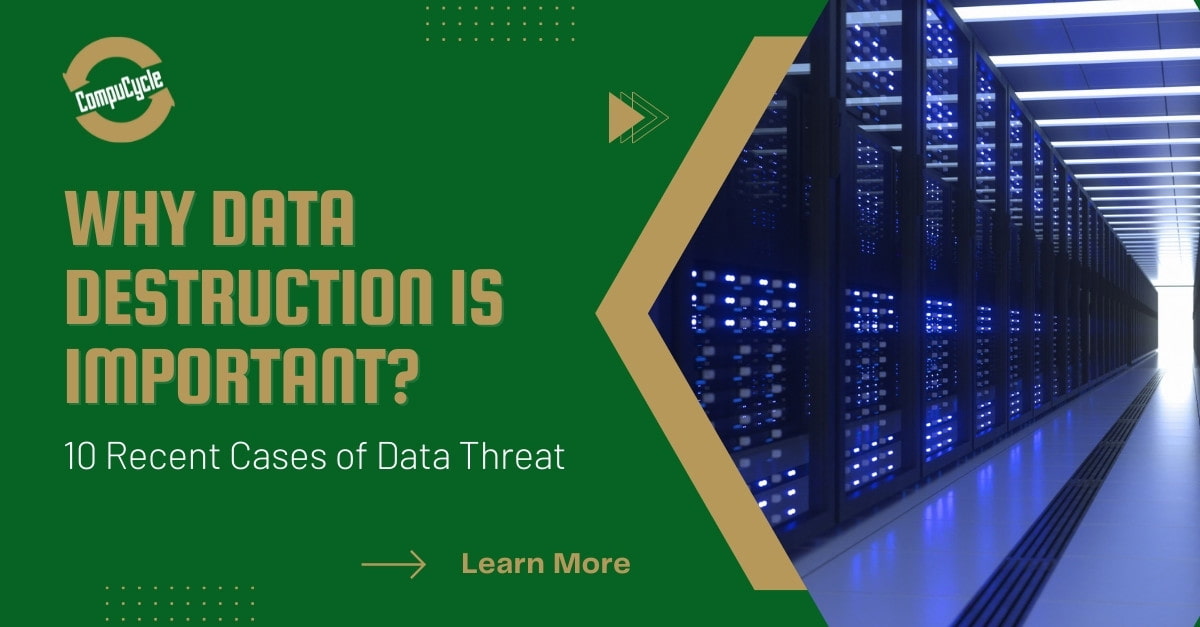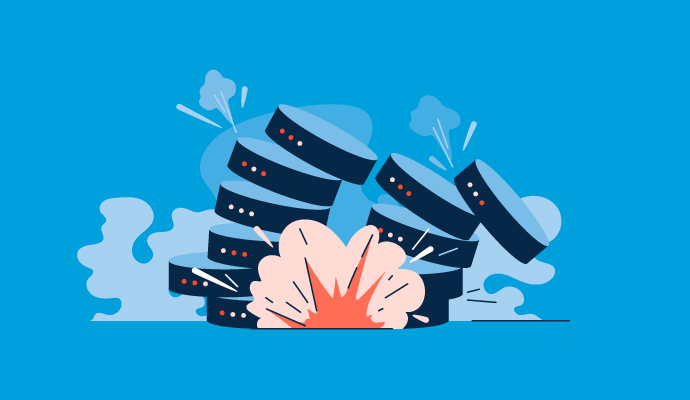Best Practices for Data Destruction to Fortify Your Cyber Security Structure
Best Practices for Data Destruction to Fortify Your Cyber Security Structure
Blog Article
The Significance of Effective Data Destruction Practices in Shielding Sensitive Information and Ensuring Computer System Safety
In an age where data violations are increasingly typical, the value of reliable data damage methods can not be overemphasized. Executing durable information destruction methods not only alleviates these threats but additionally aligns with lawful conformity needs, making certain that companies maintain their track record and foster customer count on.
Comprehending Information Destruction
Recognizing data damage is essential in today's digital landscape, where sensitive information can conveniently be jeopardized. Reliable data devastation entails not merely erasing data yet making certain that information is irretrievable with thorough methods. This process is crucial for organizations that take care of private client information, copyright, or interior records, as any violation can bring about extreme economic and reputational repercussions.
Data damage incorporates different techniques, including shredding physical media, degaussing magnetic storage space gadgets, and using software-based options that overwrite information numerous times. Each method serves a certain function and should align with the level of sensitivity of the info being taken care of. Physical destruction is commonly preferred for tough drives including highly confidential data, while software application approaches could be sufficient for less sensitive info.
Additionally, adhering to industry standards and policies, such as the General Information Protection Regulation (GDPR) or the Health And Wellness Insurance Coverage Transportability and Responsibility Act (HIPAA), is necessary for compliance and to reduce legal risks. Organizations should establish a durable data destruction plan, train staff members on best practices, and routinely investigate their procedures to guarantee that all delicate information is taken care of securely and efficiently.
Dangers of Inadequate Practices
Poor information damage methods reveal companies to considerable dangers that can have far-ranging repercussions. When sensitive details is not appropriately disposed of, it remains susceptible to unapproved accessibility, which can cause information breaches and identification theft. Such occurrences not only compromise the safety of people however likewise taint the organization's online reputation, causing a loss of customer count on and prospective monetary effects.
In addition, regulative compliance is significantly rigorous in lots of industries. Failing to follow information damage guidelines can lead to large fines and lawsuits versus companies. These fines can draw away and strain monetary sources interest from core organization procedures.
On top of that, the abuse of residual data can result in copyright theft or corporate espionage, endangering affordable advantages (data destruction). The effect of insufficient data devastation prolongs past prompt financial losses; it can additionally result in lasting damage to brand stability and market setting

Organizations need to identify that data safety is not entirely about stopping violations; it likewise incorporates the liable management of data throughout its lifecycle. Neglecting efficient information devastation procedures can have tragic implications, underscoring the need for durable measures to minimize these dangers.
Ideal Practices for Information Devastation
Carrying out reliable data devastation practices is crucial for safeguarding sensitive info and preserving compliance with governing requirements. Organizations should adopt a multi-faceted strategy to guarantee that information is irretrievable, therefore avoiding unapproved access and prospective breaches.
First, data need to be categorized based upon sensitivity, allowing organizations to apply ideal damage approaches customized to the level of risk. For digital data, making use of software-based data-wiping tools that abide by market requirements can successfully overwrite existing data. Physical destruction methods, such as shredding or degaussing, are critical for devices that save delicate details, ensuring complete elimination.
Developing a Continued clear information retention policy is crucial, outlining how much time different kinds of information need to be preserved prior to destruction. Normal audits of data storage space systems are also necessary to recognize unneeded or outdated data needing elimination.
In addition, training workers on the importance of data destruction and the specific procedures to comply with fosters a society of safety within the company. Maintaining documents of data destruction refines offers responsibility and sustains conformity with inner plans and external laws. By sticking to these finest practices, companies can substantially reduce the dangers connected with data direct exposure.
Legal and Compliance Considerations

Failure to adhere to these guidelines can cause severe charges, consisting of substantial fines and reputational damage. Organizations must implement a robust data damage policy that aligns with these legal structures and gives clear standards on the appropriate techniques of data disposal, whether physical shredding or digital wiping.
Additionally, keeping paperwork of information damage activities is crucial for demonstrating conformity throughout audits or evaluations. By focusing on lawful and conformity considerations, organizations can improve their information safety and security posture and foster count on with customers and stakeholders, ultimately adding to an extra protected data management environment.
Benefits of Effective Data Damage
Reliable data devastation methods extend past simple conformity; they provide significant advantages to organizations that prioritize them. By ensuring that sensitive info is irretrievably ruined, organizations mitigate the danger of data violations and the potential monetary consequences related to them. This aggressive method not just safeguards versus unapproved access but additionally boosts the overall reliability of the company in the eyes of stakeholders and customers.
Implementing durable information damage approaches, such as physical Web Site damage of storage space devices or innovative information wiping techniques, adds to the fortifying of a company's cybersecurity posture. data destruction. It lowers the chance of intellectual residential or commercial property burglary and shields exclusive information, therefore keeping an one-upmanship out there

Verdict
In conclusion, reliable data devastation techniques are necessary for protecting delicate info and enhancing total computer safety. Eventually, a dedication to robust data devastation methods promotes a society of obligation, thus strengthening an organization's cybersecurity position and maintaining customer trust.

Report this page